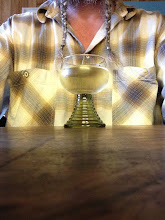My first architecture studio was situated in the inner sanctum of the Wills Building, Bristol University, a faux victorian gothic for a faux Oxbridge, all paid for by a cigarette manufacturer. How curiously appropriate. But architectural studios from the AA to Glasgow to Liverpool to Bath fair little better in demonstrating fitness for purpose even given their reputations as some of the finest architecture schools in the world.
This paradox perhaps illustrates that an ideal place of learning is elusive. We learn everywhere, and we learn informally, in pubs, walking down streets, in front of television and now we Google whatever we need.
When asked to demonstrate the 'new' world of working and learning for 'New Labour' for a zone in the Millennium Dome (I had met WORK director Tim Pyne on election night 1997- the rest is history- see 'Sitting in the White Horse Thinking about a White Elephant' The Tragic in Architecture, Patterson R, 2000) it became clear that we were significantly in a world of what would become termed SPIN. Maybe we didn't personally care at that time, the realisation would dawn in my case slowly, but the imperative was certainly for information to be delivered 'on message' and this was a terrible pain in the arse, especially if the message was rather dubious. At this point Joseph Goebbels statement, that the best propaganda is that which the audience does not notice, becomes highly pertinent.
At the time I had also learnt a great deal from Las Vegas. This knowledge might be paraphrased, without much ad do and with apologies to Giedion (1948) as 'Economics Takes Command'.
The positive spin of New Labour has given way, post 9/11 to the all pervasive vagaries of the Shock Doctrine and seemingly impossible conjuring tricks with economics. We are tumbled through information and emotion like we are stuck in a washing machine. Sometimes it seems that the C21st western world is based on little else but crying and shopping.
So it might be prescient to look at some examples of learning environments where there is less to hear and less to see, where the focus is more precise, and precise perhaps because of the trauma of their genesis.
Walter Gropius was an intelligent, sophisticated young man, but prone of course to the tribulations of youth just like anybody else. Not only did he have an affair and marry prototype sex-bomb Alma Mahler, he was nearly buried alive under rubble and dead bodies in WW1. If we consider his period 1915-20 it appears nothing but traumatic. He came through one of the most curious evocations of manic spirituality yet known to civilization and came through it first hand, managing it's embers in the Weimar Bauhaus, which, as Alma noted, was noteworthy only for the stench of garlic (Itten, in his robes, had commandeered the kitchens). What we get come 1925 is the most positive crystallisation of mental clarity in the building for the Bauhaus in Dessau, a building blessed with understatement to the point of the sublime. There is no nature in the Bauhaus Dessau, there is just a demonstration of mankind's practical, hopeful (some would say Utopian) intellect. (Even then, the studios don't really work very well).
Louis Kahn demonstrates the American tradition of the organic with the Salk Institute. It doesn't necessarily look like that's what he's doing but that is what he does all the same. The building 'worships' the horizon of the Pacific ocean, the rooms for the scientists are arranged like physical crystals regularly placed as pod structures off the main structure of the workshops they serve. There are a lot of corners, building this way is expensive, but the Americans have a penchant for the super primitive and hang on tight to some notion of organic unity through the vagaries of Sullivan, Wright, Lautner, and Kahn despite all evidence to the contrary.
Alvar Aalto, at the university of Otaneimi, taps in to a more ancient humanism, reworking the most elemental of the western world's teaching spaces, the Greek amphitheatre, covering it (given the northern climate) but still providing an exterior echo of the interior form on the outside, and then racking and stacking all the ancillary stuff in a rational way around it. It proves some things will never change, no matter how much information you can download under a tree in a plastic Arcadia, you will still need instruction at some point, you will need the road map to hold it all together, and you will need a helping hand to help you see a positive way forward amidst a morass of information and tumult of emotion, and of course to see through the spin.
(Precis of a symposium introduction given to third year students on the subject of their upcoming final project 'A Place of Leaning' 10.1.2013)
Friday, 11 January 2013
Subscribe to:
Post Comments (Atom)


No comments:
Post a Comment